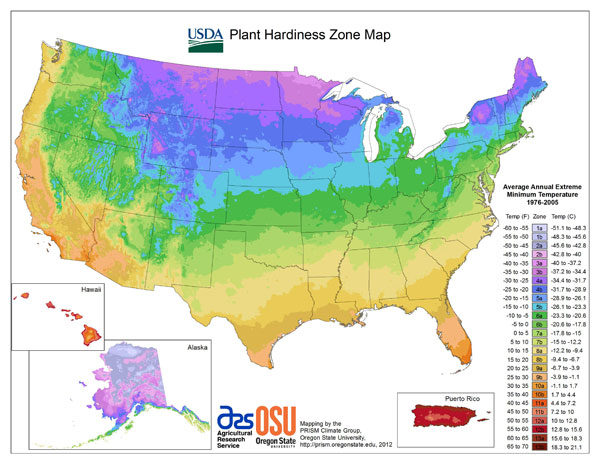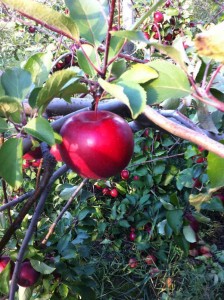Good luck finding a parking spot at the garden center in early spring; fruit trees, shrubs and brambles take up half the lot! By fall the fruit tree display has greatly diminished, and there are plenty of places to park between pumpkins and bales of straw.
Since spring is the most popular time to plant, nurseries often stock up in spring and run short on fruit trees and shrubs for fall planting. But fall may actually be a better time for fruit plants to establish strong roots, beat the heat and balance moisture that is critical to their development.
Root growth
Root growth is most active in fall. Planting fruit trees, shrubs and brambles in October and early November gives roots ample time to get established before harsh winter weather. A solid foundation set in fall, boosts spring growth and production.
Avoid heat-stress
Planting fruit in fall avoids summer heat-stress. When newly planted fruit trees, shrubs and brambles get too warm, they lose water through transpiration. To make matters worse, their need for water is heightened in warm, dry weather.
Moisture-balanced environment
Another potential problem fall planting evades is too much moisture. When subjected to heavy spring rains, fruit plants often suffer wet-feet. Wet-feet hinder plant development because the roots cannot properly breathe in oxygen from the soil. Without adequate oxygen, roots stop growing. As a result, plants do not absorb needed minerals from the soil. Planting fruit in fall allows growers to manage a moisture-balanced environment for young fruit trees, shrubs and brambles.
Words of caution
I write these words from USDA Plant Hardiness Zone 6. Zones 5 and lower should exercise caution when planting in fall. Northern growers should stick to cold-hardy, zone appropriate fruit trees. Adding tree-guards and a thick layer of mulch offers extra protection from winter weather.
Growers in zones 6-10 have more options for fall fruit planting. I am building a briar of blackberries this fall. My local garden center has cleaned house for the season, but I was able to order container-bound brambles through a mail order catalog. I selected container-bound over bare-root brambles because container-bound fruit plants have a working system of roots already in place, giving them a head-start advantage. Bare-roots have to work hard to build a new system before winter weather.













